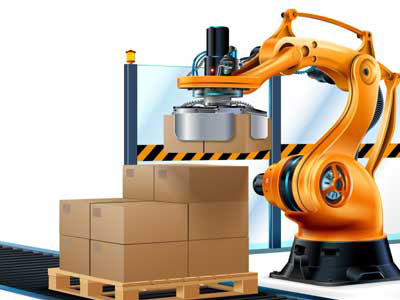Key Takeaway
Industrial robots are programmable machines used to perform tasks in manufacturing applications. They typically consist of a robotic arm, gripper, sensors, and a control unit. These robots handle, assemble, and process workpieces. Depending on their programming, they can operate autonomously. Industrial robots improve efficiency, accuracy, and safety in industrial applications by performing repetitive or dangerous tasks. They are widely used in automotive, electronics, and metal industries. Understanding the basics of industrial robotics helps in optimizing their use and enhancing production processes.
Fundamental Concepts
Understanding fundamental concepts is crucial in any field, including industrial automation. These core principles form the bedrock of knowledge needed to grasp advanced topics. In industrial automation, fundamental concepts encompass basic theories and practices that drive processes and innovations. They provide a solid foundation for engineers and enthusiasts alike, ensuring a comprehensive understanding of how automation technologies function and evolve. Mastering these fundamentals is key to navigating complexities and implementing efficient solutions in modern industrial settings.

Key Technologies
In industrial robotics, several key technologies are crucial for optimal performance and efficiency. Actuators are the primary components responsible for moving the robot’s joints and limbs. These devices convert electrical signals into mechanical movement, allowing robots to perform tasks with precision and agility. Advanced actuators, such as servo motors and hydraulic systems, provide the necessary power and control for various applications. Sensors, including vision systems and force sensors, play a vital role in providing feedback about the robot’s environment. These sensors enable robots to adapt to changes, ensuring accurate and consistent task execution.
Another essential technology in industrial robotics is the development of advanced control algorithms. These algorithms allow robots to execute complex sequences of actions with high precision and reliability. By leveraging sophisticated mathematical models and real-time data, robots can make precise movements and adjustments. Artificial intelligence (AI) and machine learning (ML) are increasingly being integrated into robotic systems, enhancing their ability to learn from experiences and improve over time. AI-driven robots can analyze vast amounts of data, recognize patterns, and optimize their performance, making them more efficient and versatile in various industrial settings.
Common Applications
Industrial robots are versatile tools used in numerous applications across different industries. In automotive manufacturing, robots play a critical role in assembling cars, welding parts, and painting. These robots handle tasks that require high precision and consistency, significantly improving production efficiency and quality. The electronics industry also benefits from robotics, where robots manage delicate components, ensuring precision and reducing the risk of damage. By automating these tasks, companies can achieve higher throughput and maintain consistent quality standards.
Packaging and palletizing are other common applications of industrial robots. In these tasks, robots manage repetitive and labor-intensive processes, improving speed and reducing human error. The food and beverage industry also utilizes robots for sorting, packaging, and inspection tasks, ensuring hygiene and efficiency. Robots in these sectors enhance productivity while maintaining high standards of cleanliness and safety. The versatility of industrial robots makes them indispensable in various sectors, driving innovation and operational excellence across industries.
Industry Standards
Adhering to industry standards is essential for ensuring the safety, reliability, and interoperability of industrial robots. Organizations such as the International Organization for Standardization (ISO) and the International Electrotechnical Commission (IEC) establish guidelines for the design, installation, and operation of robotic systems. Standards like ISO 10218 outline safety requirements for robotic systems and their integration into industrial environments. Compliance with these standards is critical to protecting workers and ensuring that robots function effectively.
Meeting industry standards also helps companies meet regulatory requirements and fosters trust in robotic systems. These standards provide a framework for designing robots that are safe and reliable, minimizing the risk of accidents and malfunctions. By adhering to these guidelines, manufacturers can ensure that their robots are compatible with other systems and can be seamlessly integrated into diverse industrial settings. Compliance with industry standards is a cornerstone of responsible robotics development, promoting safe and effective use of technology in various applications.
Future Trends
The future of industrial robotics is being shaped by several exciting trends. One significant trend is the rise of collaborative robots, or cobots, designed to work alongside human workers. Cobots are equipped with advanced sensors and safety features that allow them to interact safely with humans, enhancing productivity and safety in the workplace. These robots can perform tasks that require human dexterity and decision-making, making them valuable partners in various industrial applications.
Another emerging trend is the integration of the Internet of Things (IoT) into robotic systems. IoT enables robots to connect and communicate with other devices in a smart factory environment, facilitating seamless data exchange and coordination. Advances in AI and machine learning will further enhance the capabilities of industrial robots, allowing them to perform more complex tasks and adapt to new situations autonomously. These trends point towards a future where robots are more intelligent, integrated, and versatile, driving innovation and efficiency across industries. The ongoing evolution of industrial robotics promises to revolutionize manufacturing and other sectors, making them more responsive and adaptive to changing needs.
Conclusion
Industrial robotics form the backbone of modern manufacturing, automating processes with precision and efficiency. Understanding their basics is crucial for optimizing production lines and enhancing productivity. From articulated arms to collaborative robots, each type offers unique advantages suited to various industrial needs. Embracing these technologies not only streamlines operations but also ensures safer workplaces and higher output consistency, paving the way for sustainable growth in industrial settings.
